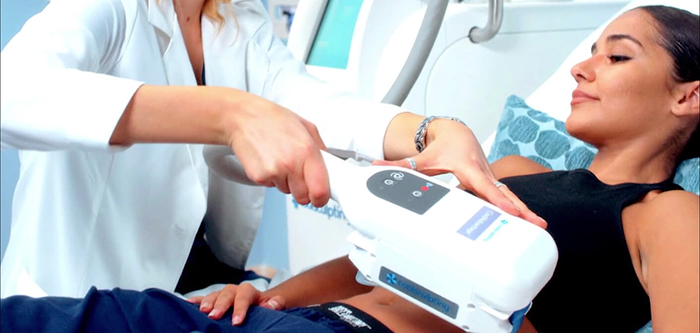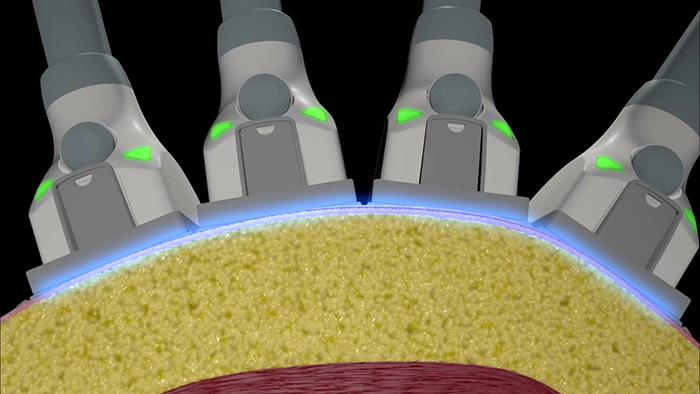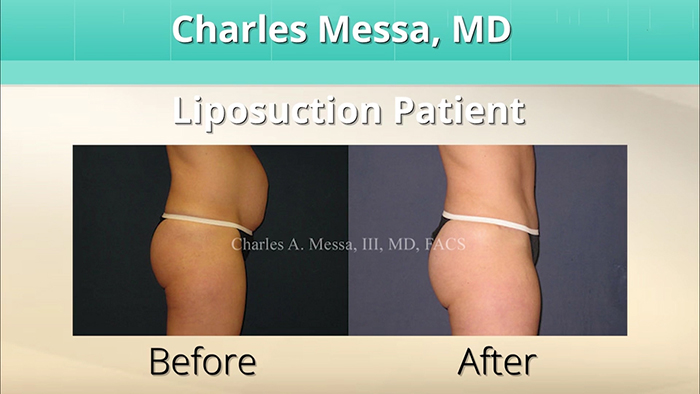Whether you want to confidently bare your midriff, or you just want to look better in your clothes, let’s be honest – who doesn’t want a tighter tummy? The bad news for many is diet and exercise won’t always achieve this goal.
Fortunately, there are several effective invasive and non-invasive treatment options for men and women who want to get rid of pesky belly fat. Deciding which treatment will get you the results you want, however, can easily become a confusing process. Navigating the jungle of cosmetic fat reduction procedures is best done with the help of an experienced plastic surgeon.
“There’s not one treatment that’s perfect for every person,” points out board certified plastic surgeon Dr. Charles Messa. Understanding your starting point, your goals and your recovery timeline are all important steps toward choosing the right treatment to transform your stomach from flab to fab.
Size Up Your Stomach
Most people who visit Dr. Messa’s Weston, Florida plastic surgery practice want to know how to improve their midsection. To begin with, Dr. Messa evaluates each patient’s problem areas by determining if the culprit is excess fat, excess skin, or both. Next, he finds out the degree of change the patient desires.
Non-Invasive vs. Surgical
Surgical procedures to improve the abdomen, including liposuction and tummy tucks, offer the most dramatic results in the shortest time frame. Not everyone, however, is ready for surgery or is able to take time off work for the recovery period associated with a surgical procedure.
In many cases, patients are willing to accept slower-to-appear, less dramatic results in order to avoid downtime. For these patients, Dr. Messa may recommend CoolSculpting or SculpSure. Both of these non-invasive treatment options offer reliable fat reduction and can be done during a short office visit.
Non-Invasive Treatments:
- CoolSculpt: Freeze the fat
- SculpSure: Melt the fat
Invasive Treatments:
- Liposuction: Suction out the fat and recontour the area
- Tummy Tuck: Remove exces skin and retighten stretched abdominal muscles
Frequently, patients ask Messa about other treatments they have heard about from friends or have seen advertised online. He cautions against procedures that haven’t been proven effective. “I don’t promote treatments that don’t work,” says Messa. “I stay away from that, because, most importantly, I want my patients to trust my opinion.”
FREEZE the Fat
A popular non-surgical device called CoolSculpting targets and freezes unwanted fat cells. If you have a pocket of fat you can squeeze or pinch, that fat can be drawn by suction into a special applicator attached to a CoolSculpting machine. The temperature inside the applicator is lowered to the point where temperature-sensitive fat cells die, while the skin and surrounding tissues are not damaged.

After the fat cells die, they are slowly flushed out of the body over a period of several weeks. While the results are not seen overnight, the procedure does reliably provide a 25% reduction of fat within the area treated. Since the size of the treatment area is limited to the size of the applicator, multiple areas may need to be treated within the abdomen in order to achieve the results a patient desires. After the body has had time to flush out dead fat cells, patients can re-treat the same area to achieve an even greater degree of improvement.
MELT the Fat
When a patient has trouble areas that will not fit into a CoolSculpting applicator, another non-invasive fat reduction option is SculpSure. On the opposite end of the temperature spectrum, SculpSure uses lasers to deliver heat to the fat cells below the skin, melting them away.

“SculpSure destroys fat cells similarly to CoolSculpting,” explains Dr. Messa. “Again, patients see about a 25% reduction in fat and it takes a few months for the body to excrete and metabolize those broken down fat cells.”
SUCTION the Fat
“Liposuction, yes, its more invasive,” says Messa. “It has to be done with anesthesia in most cases, but you can remove more than 25% of the fat that is there. You can treat multiple area with one single operation. After two to three days, or a week at the most, you’re back to work.” After making a small incision in the abdomen, surgeons insert a hollow tube called a cannula. Fat is mechanically vacuumed out of trouble spots through the cannula.

Liposuction is considered the gold standard in fat removal, but not only because it’s the best way to remove fat. An expert surgeon will then use the cannula to contour the area in question – it’s not just about fat removal. This is the huge positive about liposuction, the ability to contour the body by removing, redistributing, and smoothing fat. The non-invasive options have no ability to contour.
TUCK the Tummy
Only one procedure can fully correct sagging abdominal skin, and that is the tummy tuck. “Someone who has had children, has stretch marks, has loose extra skin, maybe an old C-section scar with a little bit of an overhang above it, that patients is going to do better with a tummy tuck,” adds Messa.
During a tummy tuck the weakened abdominal muscles are tightened and the excess skin is surgically removed. Not every women faces stretched abdominal muscles, but many suffer from the issue following pregnancies. This is an oft-told misconception about the tummy tuck: it is not a fat removal procedure. A tummy tuck is meant solely to correct stretched muscles and/or remove excess skin that isn’t going anywhere otherwise. Tummy tucks are usually complimented with liposuction to handle and necessary fat removal and body contouring. The result is a smooth, flat stomach. The trade-off for a tummy tuck is a longer recovery and an incision that is hidden in the bikini line.
Will the Fat Come Back?
“Once fat cells are removed, you don’t grow new fat cells,” Messa explains. In the long run, results from any fat reduction treatment, invasive or non, can be maintained through diet and exercise.
On the other hand, if a person consumes more calories than their body can use, the body will store that added fuel as fat in the fat cells that remain. “Those fat cells that remain are basically storage vacuoles,” points out Messa. “Which means they will keep storing fat and you can get heavy again.”
Finding an experienced surgeon is more than their technical ability in the operating room. As with all plastic surgery procedures, the consultation is critical. It’s where an experienced surgeon can hear a patient’s issues and do an examination to pair them into the best plan of attack. As well as a comprehensive examination and procedure, experienced surgeons will help their patients maintain the results. After all, they are physicians with their patients’ health as the top priority always.















Facebook
Twitter
Instagram
YouTube
RSS